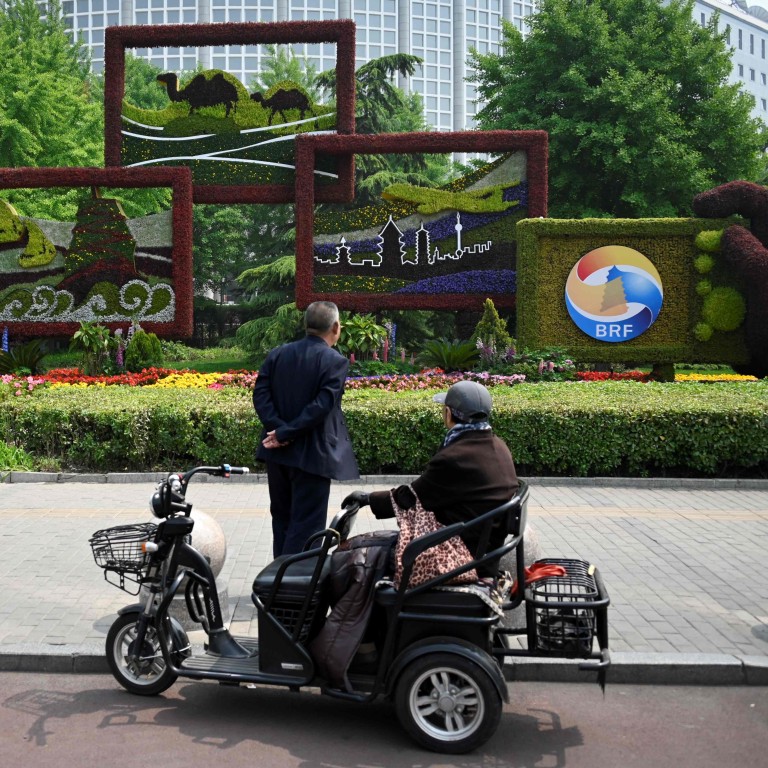What should we expect to see at the
second Belt and Road Forum this week? This time, I believe, the Chinese leadership will shift its focus from simply expanding the quantity and scale of the “Belt and Road Initiative” to improving its quality. Put differently, the task at hand is to transform the initiative from a grand but inchoate vision into an actual investment plan.
The belt and road plan was initially conceived as an ambitious, transcontinental effort to expand trade routes between China and
some 65 other countries. According to this vision, not only would the strategy diversify China’s trade partners and allow it to export excess capacity, it would also raise the country’s international standing. But far from shoring up soft power in the past six years, the plan has faced a global backlash. Countries have banded together to resist the initiative, such as Indonesia, Thailand and
Malaysia, where rail projects have stalled. The meme of “debt trap diplomacy”, first coined by an Indian geostrategist, has now stuck.
This ongoing backlash is forcing China to rethink and reset the initiative. Chinese leaders recognise the plan has run into many unexpected problems overseas, including mounting debt risks,
white-elephant projects,
corruption and various other social and political problems that have stirred public anger in host countries.
A major driver of these problems is the lack of quality control and brand management on China’s part. Despite being a
trillion-dollar, top-priority policy, the Belt and Road Initiative is surprisingly ill-defined. It appears any company or project is free to claim membership of it, which means that when anything goes wrong, the whole programme gets blamed. Guidance from Beijing on where investments should be made and what rules they should follow is also conspicuously lacking.
In response to global criticism, the programme is now changing course towards fine-tuning and quality control. Using the analogy of Chinese painting, President Xi Jinping spoke of the need for the initiative to switch from xieyi (freehand style) to gongbi (detailed strokes). In just the last few months, the state media has repeatedly stressed the need to achieve “high-quality” investment. While the goal is aimed in the right direction, the practical challenges of raising the quality of the Belt and Road Initiative are daunting.
One essential step I am proposing is to develop
shidian (pilot tests) for the formulation and implementation of quality belt and road projects. The concept of pilot tests is familiar to policymakers in China. Reform-era China is known for its
experimental style of governance, and has made extensive use of pilot tests for policy initiatives, such as a
special economic zone in Shenzhen and private farming in Anhui.
Pilot tests allow policymakers to try out new ideas in delimited geographical contexts. If they fail, the consequences are contained. But if successful, they garner public support for wider adoption but also yield concrete lessons for policy adjustment. When pilot tests prove successful, Beijing may scale them up to the level of national policies.
If China is serious about improving the quality of the Belt and Road Initiative, such that it is directed towards inclusive and sustainable development, it would be prudent to start with one or a few pilot tests. In Southeast Asia,
Cambodia could be a suitable partner, as China is the country’s largest foreign investor and aid provider. Moreover, unlike
Sri Lanka and
Pakistan, Cambodia has only moderate levels of debt, according to the International Monetary Fund, so it is in a less onerous situation than other heavily indebted countries.
What should a high-quality Belt and Road Initiative look like in a country like Cambodia? Three principles stand out: relevance, transparency and accountability. The programme should focus on projects that really bring value to the local economy and society. This means not just the usual large-scale infrastructure projects like motorways and stadiums, but also smaller-scale yet essential projects like sanitation and road repairs, which will greatly benefit local communities.
For example, in the seaside town of
Sihanoukville that I’ve visited, what local citizens most desperately need are basic public goods like working roads, fixed water pipes and affordable housing. Compared to grand projects, these do not cost nearly as much, yet they are neglected because they are less visible and marketable. This is where a locally responsive Belt and Road Initiative can make a real difference.
A pilot scheme also provides a crucial opportunity to test out details of transparency and accountability, universally welcome principles that are difficult to implement in practice. For instance, what aspects of each project should be made transparent, by whom and via which platform? Observers often fail to realise that even within China, there is limited transparency in ministries and state banks; for instance, systematic information on domestic loans is not publicised. Extending principles of
transparency overseas is therefore a lot more challenging than most people imagine. It is not only a matter of political will, but also of capacity, experience and institutional design. Achieving the latter requires adaptation and experimentation, and it is best to start in a delimited location.
As management guru Peter Drucker once said, “The best way to predict the future is to create it.” Rather than passively wait for China to do something about the Belt and Road Initiative, recipient countries should see themselves as equal partners in the programme. The belt and road plan could be a boon or risk, depending on how host countries manage it. They may even provide testing grounds for a joint fine-tuning of the strategy, producing lessons that could apply to other countries.
Yuen Yuen Ang is an associate professor of political science at the University of Michigan, and an Andrew Carnegie fellow . She is the author of an award-winning book, “How China Escaped the Poverty Trap”
This article appeared in the South China Morning Post print edition as: Quality projects will be key to success of belt and road


